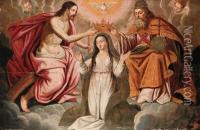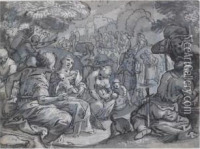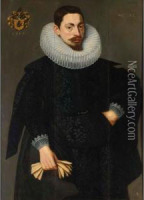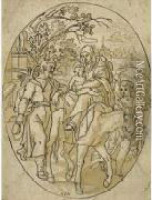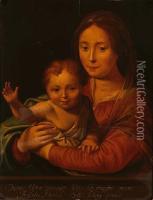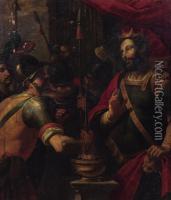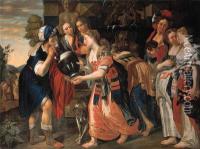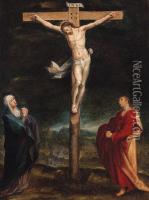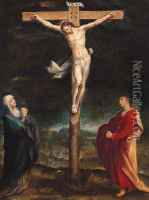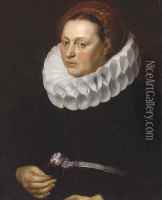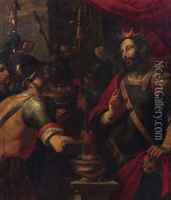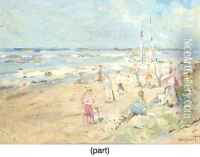Adam van Noort Paintings
Adam van Noort was a Flemish painter and draughtsman who played a significant role in the development of Antwerp as a key center of the arts in the late 16th and early 17th centuries. Born in Antwerp, he was the son of Lambert van Noort, also a painter but of less renown. Adam van Noort became a master in the Antwerp Guild of St. Luke in 1587 and ran a successful workshop which would have a profound influence on future generations of artists. His style is characterized by strong, dynamic compositions and a robust handling of figures. He is known to have worked on altarpieces, mythological subjects, and portraits, although few of his paintings have survived or been firmly attributed to him. This scarcity of surviving work makes it difficult to fully assess his impact on the art of his time. However, his significance as a teacher is undeniable. Adam van Noort's most famous pupils include Peter Paul Rubens and Jacob Jordaens, two of the most prominent Flemish Baroque painters. He also taught his son-in-law, Artus Wolffort. Through his teaching, van Noort influenced the development of the Flemish Baroque style, and his emphasis on dynamism and expressiveness can be seen in the works of his pupils. Despite his relatively small body of surviving work, van Noort’s legacy lives on through the monumental contributions of his students to the world of art. He lived and worked in Antwerp all his life, and his career spanned a period of great change in the city's artistic community, including the aftermath of the iconoclasm and the Counter-Reformation, which greatly impacted the demand for religious art. Adam van Noort died in Antwerp in 1641, leaving behind a legacy as an influential teacher and a contributor to the flourishing of Flemish art.
